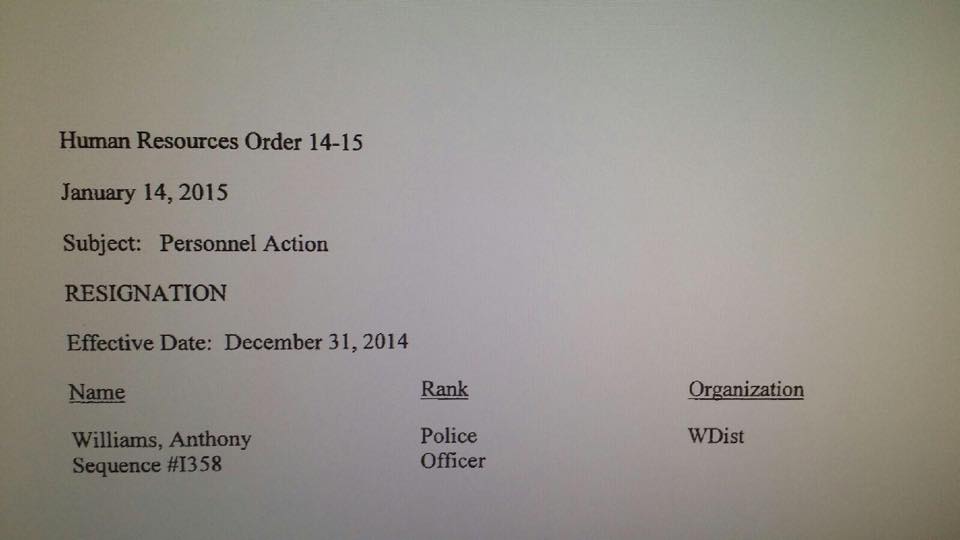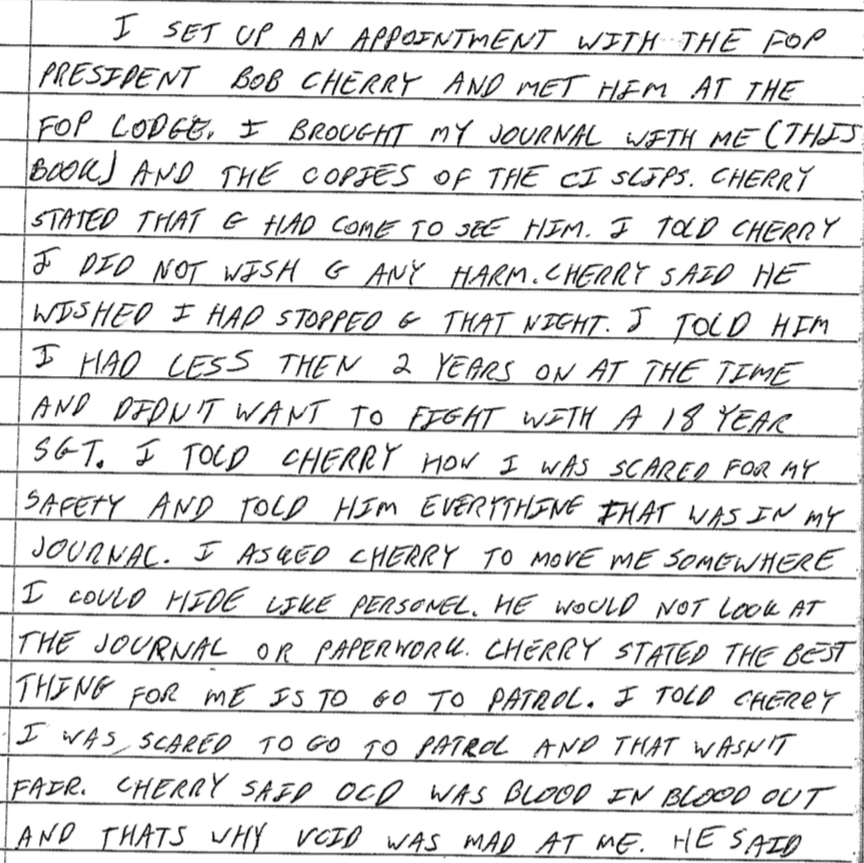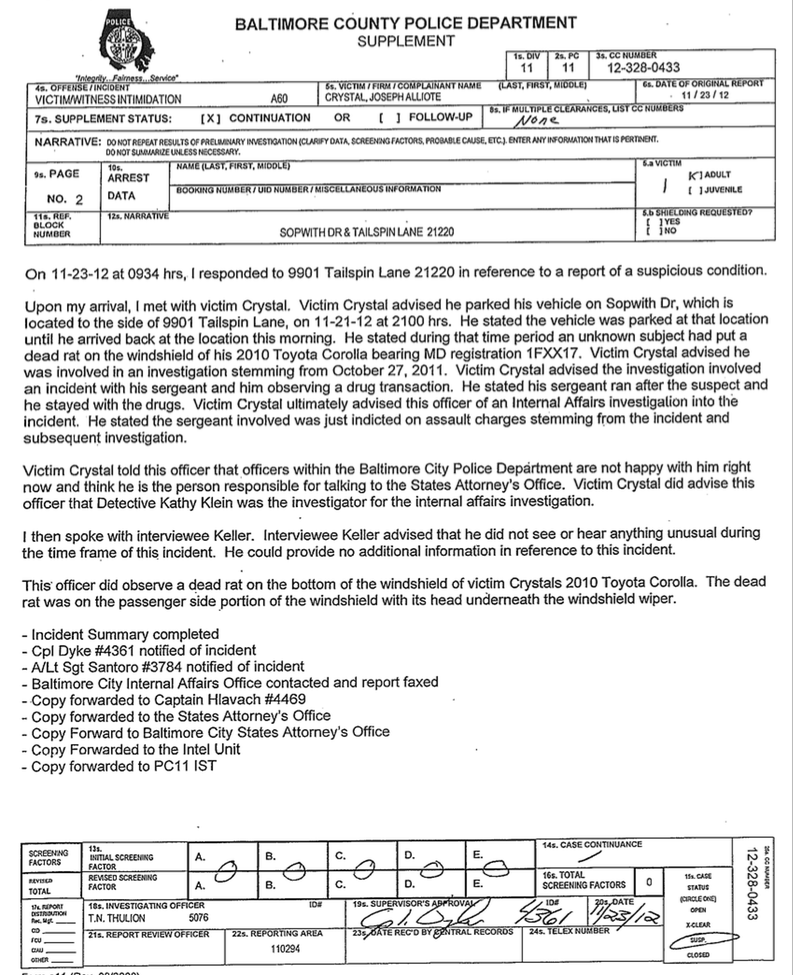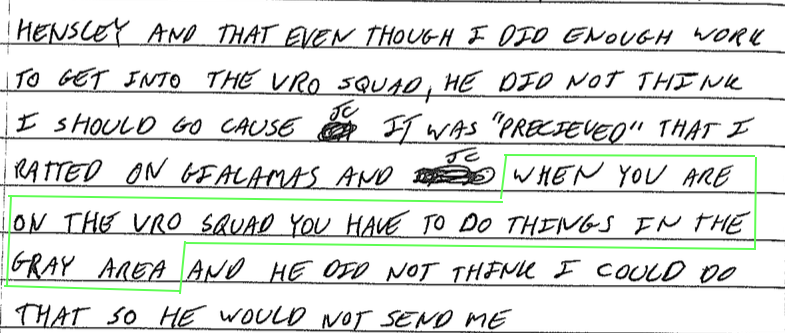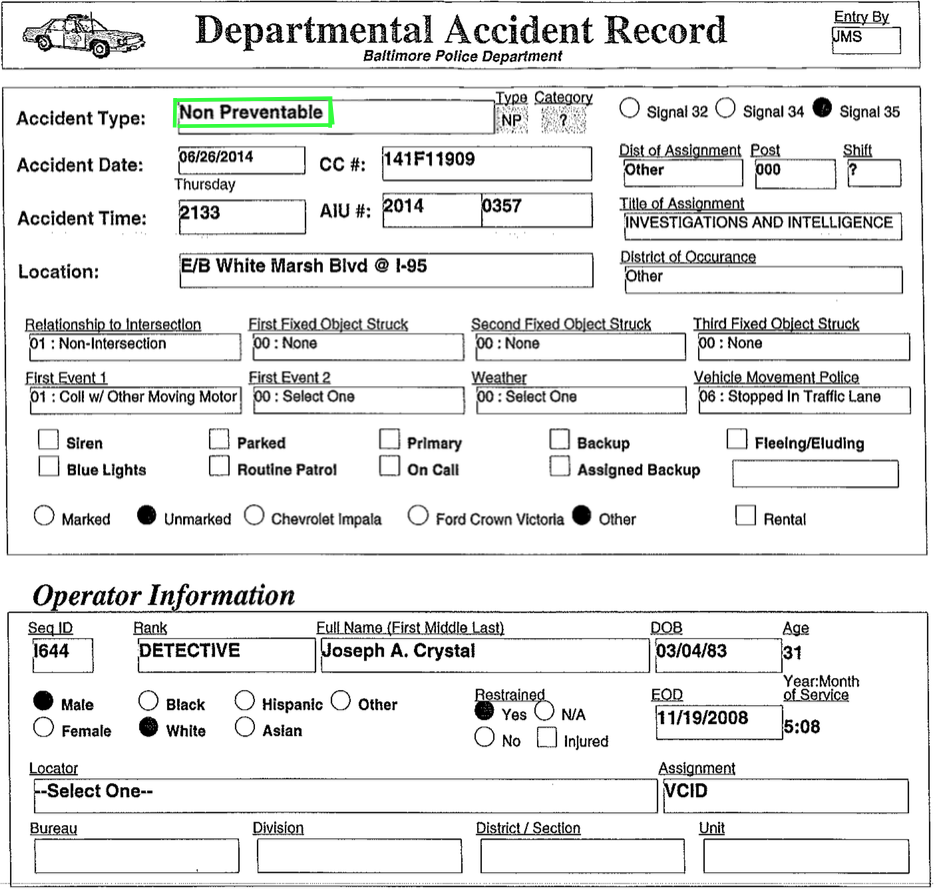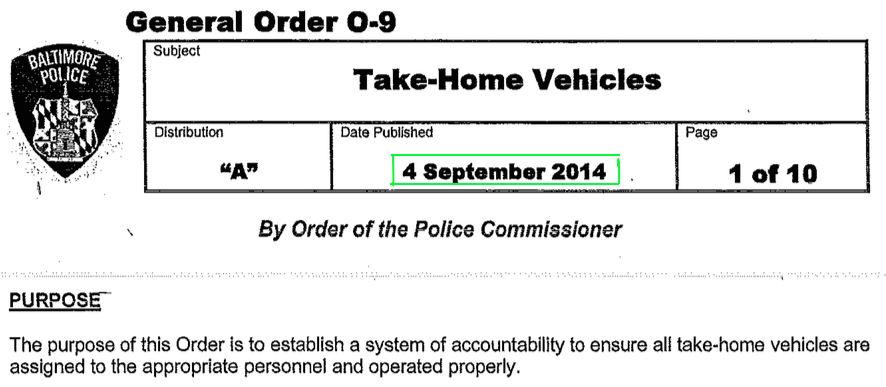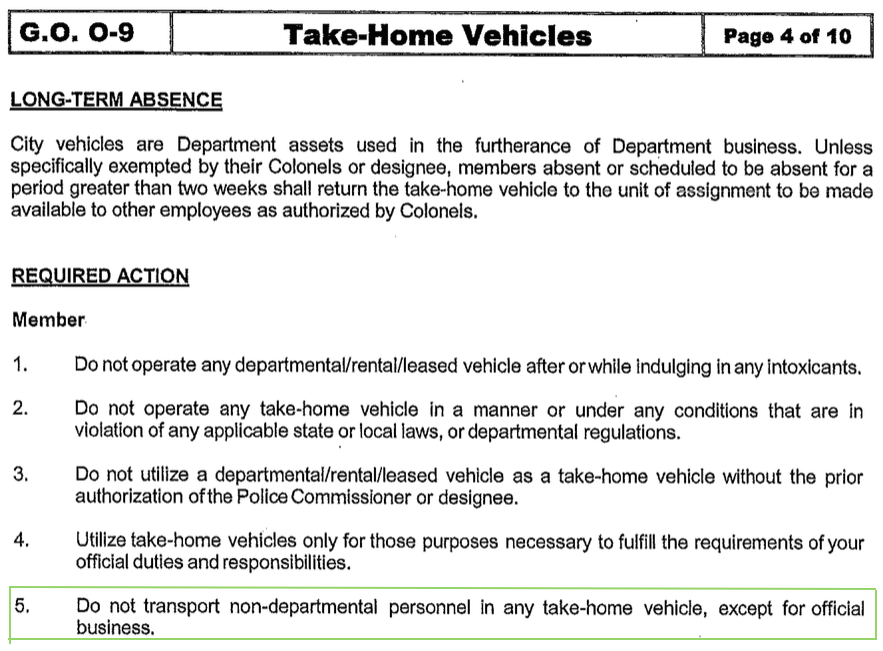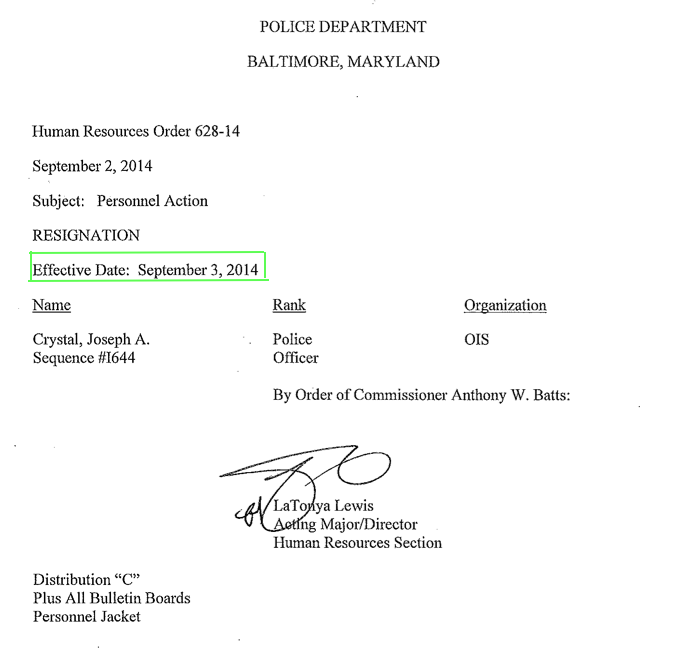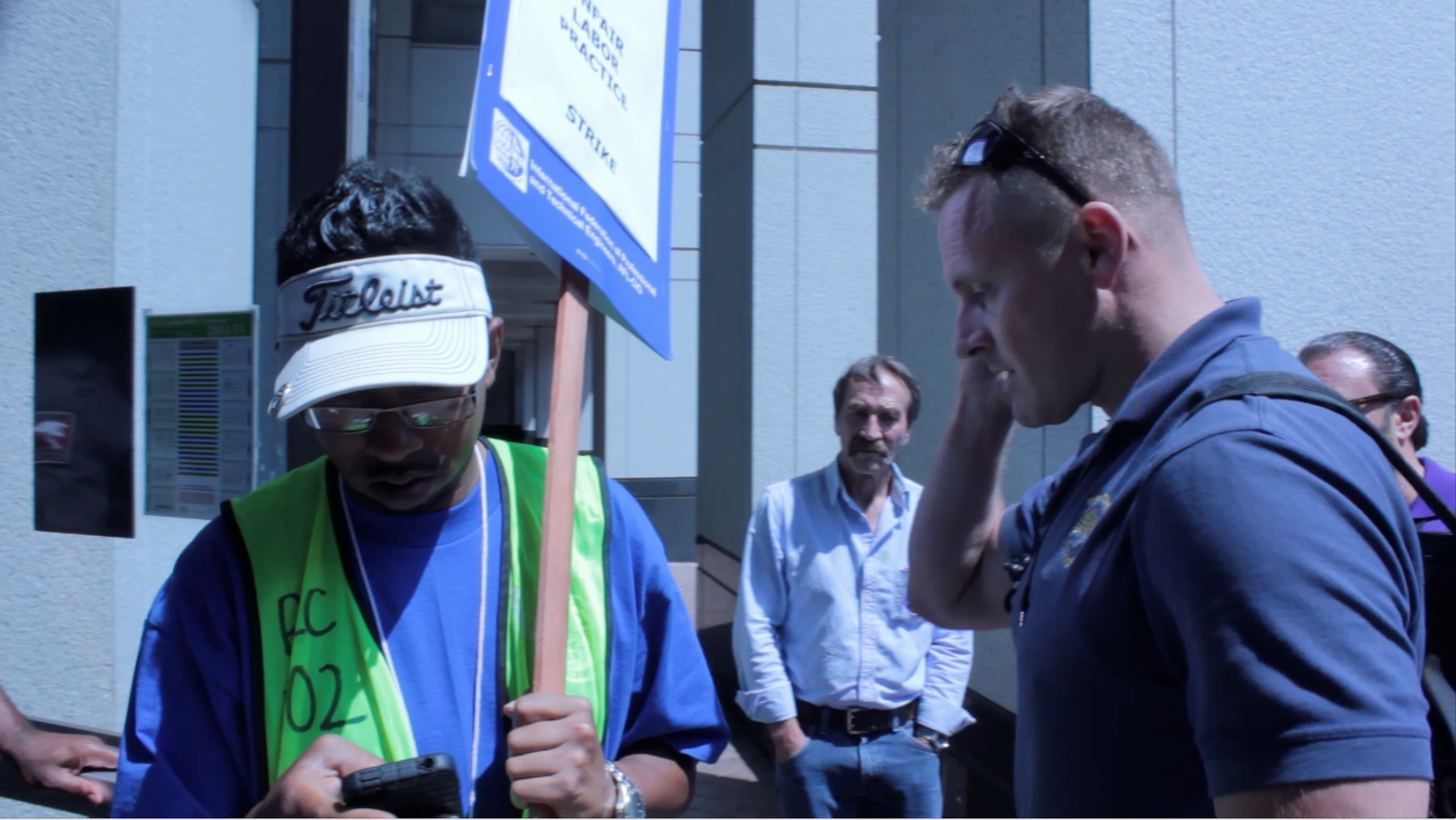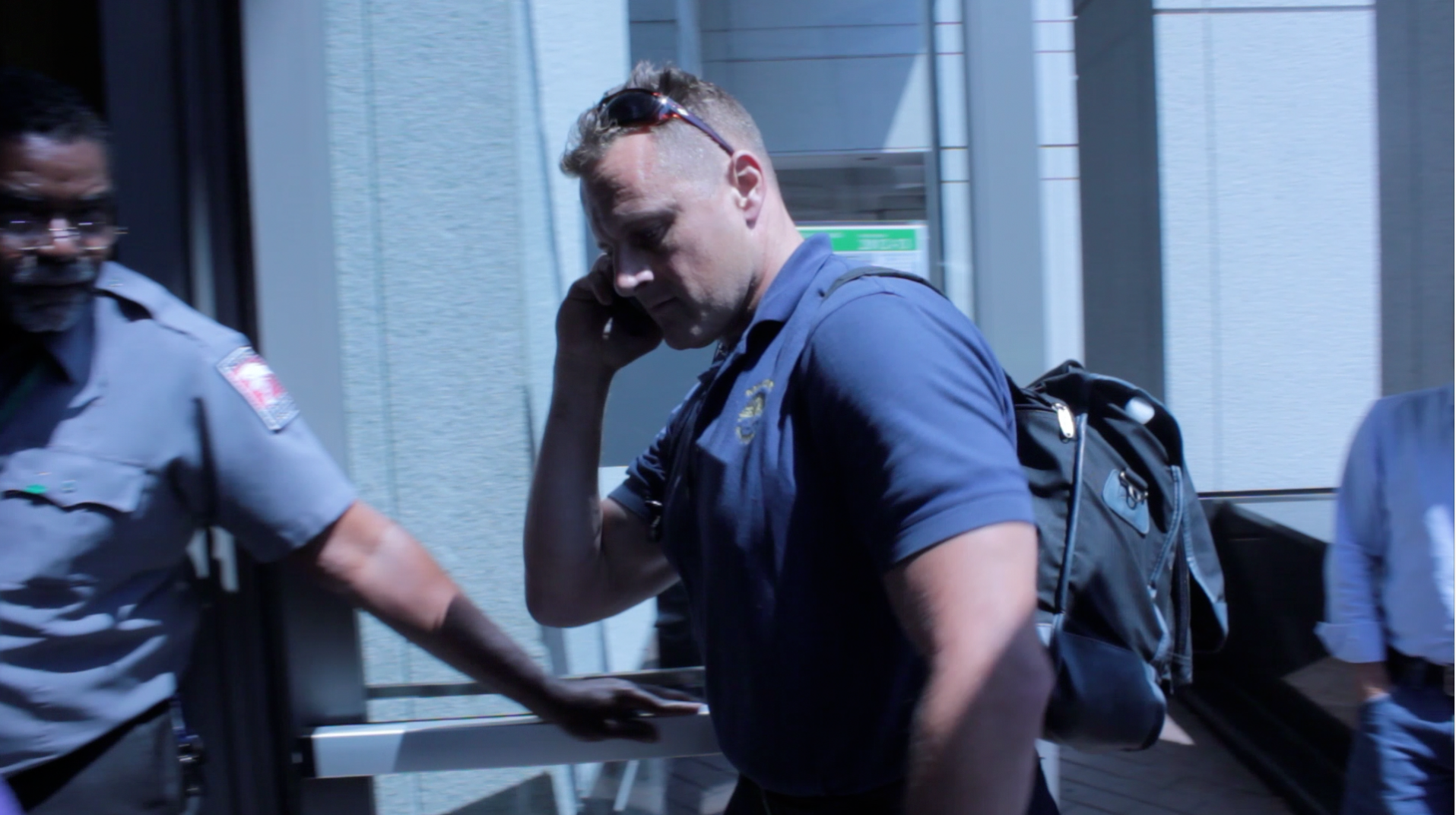know your enemy
Category Archives: history
Crystal Clear Corruption at Baltimore Police Department
During a routine drug investigation which resulted in the beating of a handcuffed suspect, a new leader in the fight against police corruption came to light. His name is Joe Crystal.
On 27 October 2011 in the city of Baltimore, Maryland : Baltimore Police Detective Joe Crystal, Department Sergeant Marinos Gialamas, along with Detective Keith Tiedemann, were on duty together in a single vehicle near Prentiss Place, when they observed what appeared to be suspicious drug related activities. As police were approaching the scene, suspect Antoine Green attempted to avoid arrest by running, then concealing himself in what he believed to be an abandoned home on Prentiss Place. He tossed his bag of drugs over a fence along the way. Unfortunately for him, the home he entered was inhabited by Nakishia Epps, who was, at the time, the girlfriend of another Baltimore Police Officer, Anthony Williams.
Williams was off-duty that day.
Upon hearing someone enter her home, Epps hid in her room with her child and called 911. She also called her boyfriend, Officer Williams.
Several other officers located Green inside the house and proceeded to effect an arrest. They placed Green into the wagon and began to drive away. While en route to the station, they received a new order from Sgt. Gialamas. (This order is part of the record, as Baltimore PD has a recording system of police communication, referred to in reports as KGA.)
Gialamas had conspired with Officer Williams, and together they had made a decision to have the arresting officers return the already apprehended and cuffed suspect back to the Prentiss address, where Williams had arrived in response to his girlfriend’s call.
Detective Keith Tiedemann, in his ‘‘Statement of Probable Cause’ filed in reference to this case, suggests that the reason for bringing Antoine Green back to the arresting location was the suspect’s aim to apologize to Officer Williams’ girlfriend, whose home Green had invaded.
In the Statement, Tiedemann seems to suggest that Antoine Green beat himself up. He also claims to have witnessed Green victimizing himself. However, Det. Tiedemann had not accompanied Green into the back of the home, so could not have witnessed what occurred in that part of the house.
During his interview with the state’s attorney’s office, Det. Tiedemann claimed that Sgt. Gialamas had instructed him to state in the report that Green’s shirt was torn prior to being transferred back into the house. Tiedemann later perjured himself in court by claiming that he believed the report he wrote was accurate, even though he had already admitted to the ASA that the report had been doctored according to instructions by Gialamas.
In fact, at the beginning of his Probable Cause report, Tiedemann claims Green’s ‘pants and shirt were slightly ripped … while he was running or while he was breaking into the home.’ This particular claim was likely the part Det. Tiedemann was instructed, by Gialamas, to edit. Near the end of the report, he acknowledges that Green ‘was photographed at ED due to his shirt being torn in the scuffle.’
It seems that, when Det. Gialamas was instructing Det. Tiedemann to edit the report, he failed to notice the second reference to the torn shirt. Thus, not only were Det. Tiedemann’s claims in the report and to the court contradictory, Tiedemann also contradicts himself within the body of his own Statement of Probable Cause.
According to Det. Crystal and accepted as fact by both juries :
During the pursuit of Antoine Green, Tiedemann remained at the Prentiss address, and Det. Crystal was standing by, awaiting assistance to retrieve the tossed bag of drugs from the other side of a construction fence. After Det. Crystal received assistance with recovery of the drugs, he was taken to the home of Epps only moments prior to Green being placed into the wagon. Crystal was present when Green was being delivered back to the scene. He saw that Green’s shirt was not torn before being taken back into the house.
Green was taken into a back room. Detectives Crystal and Tiedemann remained at the front of the house to secure the location, as a crowd of neighbors gathered to witness the unfolding events. Crystal saw, when Green emerged, that he had been roughed up and that his shirt had been torn after being taken in, and before exiting the house.
To reiterate : Det. Tiedemann could not have seen what he described in his report, because he remained at the front the house after Antoine Green was taken to the back to receive his beating.
Tiedemann’s father, who shares the same name, is a retired Major in Internal Affairs for the Baltimore PD. This might explain why Det. Tiedemann was not charged with committing perjury.
What actually occurred at Prentiss Place was abuse of authority and aggravated assault & battery on Green by Williams and Gialamas. Neither were ever charged with the conspiracy to commit this crime. Neither were charged with abuse of authority.
All charges against Antoine Green, as related to this incident, were dropped.
Three years later, in February 2014, a jury found that Officer Williams and Sgt. Gialamas had committed criminal acts in their treatment of Green.
In what is commonly seen as a dangerous choice, Detective Joe Crystal told only the truth in his attempt to report the Antoine Green incident to another sergeant by the name of Robert Amador. Sgt. Amador warned Det. Crystal that if Crystal went to Internal Affairs about this issue, he would be labeled a snitch and it would be the end of his career. Because of this warning, Crystal filed his complaint directly with Assistant State’s Attorney Anna Mantegna, bypassing Internal Affairs.
Detective Crystal testified against both accused officers, branding himself a whistleblower. In doing so, he joined an ever growing movement of honest law enforcement officers and ex-officers who are stepping out of the shadows to shatter what has been seen, historically, as an unbreakable code of silence, also known as the ‘thin blue line’ or the ‘blue wall of silence.’
Frank Serpico was the original police whistleblower, and became famous for doing this back in the early nineteen seventies. While others before him had tried to out corruption, Serpico was the first who succeeded to the point of being noticed by the press and, in turn, the system. His story was told by Hollywood.
Serpico joined the ranks of the New York City Police Department in 1960. After years of attempting to get fellow and superior officers and the city to address rampant corruption in the department, ‘Serpico finally was able to testify to the Knapp Commission in 1972, becoming the first policeman to voluntarily testify against a fellow officer. He paid for his perceived disloyalty to the force — other officers refused to come to his aid when he was shot during a drug raid in 1971.’ He was given an award, but never truly honored for his sacrifice.
The resulting Knapp Commission Report reveals a frightening depth of corruption in the NYCPD up until the nineteen seventies. In spite of efforts by Frank Serpico and the Knapp Commission, the corruption continues to this day in police agencies around the country, with the gang known as NYPD leading the pack.
A Village Voice article published in 1973 by Adam Walinsky lays out the Serpico story well.
A more recent Village Voice series of articles gives an in-depth view of the experiences of NYPD whistleblower Adrian Schoolcraft, who was kidnapped by his superior officer and forcibly removed from his home and deposited in a mental health institution against his will for working to report corruption at NYPD. Schoolcraft testified in the 2013 lawsuit against NYPD for using what has now been ruled unconstitutional stop & frisk policy.
There are other officers who, in response to their attempts to hold fellow officers accountable for criminal and otherwise corrupt acts, have been and are being harassed and threatened for doing so. These include, but certainly are not limited to the following :
‘Former Buffalo Police Officer, Cariol Horne is fighting for her pension since she was fired after 19 years on the force, over an incident in 2006 when she stopped a fellow officer from choking a handcuffed suspect.’
•
In Seaside, CA : ‘A 20 year veteran of the CSU Monterey Bay police force, was given a notice of termination this week for choosing NOT to immediately resort to violent escalation during a confrontation with a suicidal student.’
•
In October 2011, Florida Highway Patrol Trooper Donna Jane Watts stopped and arrested Miami Police Department officer Fausto Lopez, after she clocked his patrol car speed at 120 mph. ‘Over 80 officers from 25 agencies accessed Watts’ private information’ in efforts to intimidate her for taking action and making the appropriate report against Lopez. Watts has filed suit against each of those officers and their departments.
•
On 9 August 2006, retired Albuquerque officer Samson Costales, Patrolman 1st Class, testified against Bernalillo County deputies for using excessive force on Al Unser, Sr. near a SWAT roadblock Unser had happened by. Costales ‘claims in a federal civil rights lawsuit filed Thursday [23 August 2007] that APD Chief Ray Schultz, Sheriff Darren White and James Badway, an APD officer and police union official, defamed, slandered and retaliated against him after his testimony.
Costales, 52, also names the Albuquerque Police Department and the Bernalillo County Sheriff’s Department.’
A jury ruled in favor of Costales in his case against APD, and settlement in favor of Costales was reached with APOA (police association) and the Bernalillo County Sheriff.
Costales was recently present, along with several elected representatives, at protests against APD for their shooting and killing homeless victim James Boyd.
Nine months after the shooting, ‘SWAT team member Dominique Perez and former Detective Keith Sandy will each face a single count of open murder in the death of 38-year-old James Boyd, Second District Attorney Kari Brandenburg said. Open murder allows prosecutors to pursue either first-degree or second-degree murder charges.’
The day after charges were filed against Perez and Sandy, Deputy City Attorney Kathryn Levy refused to allow Chief Deputy DA Sylvia Martinez to participate in a meeting regarding a more recent shooting by APD officers. Her claim is that, having filed murder charges against two other APD officers, the District Attorney’s office has a conflict of interest, and cannot be involved in any investigations of other APD officers.
•
In April 2014, ‘Louisville [Kentucky] Metro Government … agreed to pay $450,000 to … former police detective [Barron Morgan] who says he was demoted to patrol officer on the graveyard shift for trying to help an imprisoned woman prove her innocence on a homicide charge.
Eight years after the crime was committed, Susan Jean King, in fear of being sentenced to life without parole, had pleaded guilty to the 1998 murder of Kyle ‘Deanie’ Breeden. In the plea deal, she had been sentenced to ‘only’ ten years, with possibility of parole after serving two.
King was granted a new trial by an appeals court, after the request for new trial had been denied by Spencer Circuit Judge Charles Hickman. The judge had acknowledged that a believable confession given by Richard Jarrell, Jr. in May of 2012 would have cleared King of the charges, but claimed her confession legally prevented him from granting a new trial. The appeals court disagreed, and On 9 October 2014, ‘King’s long ordeal ended when the Commonwealth of Kentucky dropped all charges.’
•
In February of 2008, ‘A jury gave $4.1 million to a trio of Long Beach police officers who were burglarized and harassed after they turned in their colleagues for pilfering lobsters from the Pacific. … Patterson and Harris have long contended that they were marked as “snitches,” denied job opportunities and had personal items stolen and vandalized in the aftermath of the mini-scandal sarcastically dubbed #lobstergate. Gage said he was forced into early retirement.’
•
More recently, an ‘anonymous whistleblower is in talks with private investigators about how some officers with the department in Oxnard were getting tattoos on their left shoulders as “notches” to signify their shooting victims. … The former officer wished to keep his identity private, as a confidential informant, because he fears retaliation from the other officers.’
check back in this box for more cases
Finally, three years after the Baltimore Police attack on Antoine Green, the cases against the two Baltimore officers went before juries.  
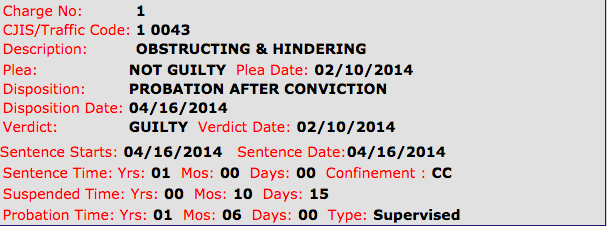 Officer Anthony Williams was recently found guilty of second-degree assault and obstructing and hindering the Internal Affairs investigation. With a possible ten year sentence for second degree assault, Judge M. Brooke Murdock handed down a year long jail sentence, then reduced it by suspending ten months and fifteen days. The sentence was effectively reduced to 45 days of incarceration for conspiring to and committing assault & battery against a person in custody.
Officer Anthony Williams was recently found guilty of second-degree assault and obstructing and hindering the Internal Affairs investigation. With a possible ten year sentence for second degree assault, Judge M. Brooke Murdock handed down a year long jail sentence, then reduced it by suspending ten months and fifteen days. The sentence was effectively reduced to 45 days of incarceration for conspiring to and committing assault & battery against a person in custody.
Williams maintains he did nothing wrong by assaulting a handcuffed suspect, saying “I shouldn’t be in this situation. I did nothing wrong. Would I change what I did that day? No.”
The jury found Sergeant Marinos Gialamas guilty of one of three charges of misconduct. Gialamas was found not guilty of assault.
 The official records of the Maryland Judiciary Case Search website, inconsistent with media reports, show that Sergeant Gialamas was subjected to ‘probation before judgement’ on the charge of misconduct in office.
The official records of the Maryland Judiciary Case Search website, inconsistent with media reports, show that Sergeant Gialamas was subjected to ‘probation before judgement’ on the charge of misconduct in office.
The case against Gialamas, having been closed on 5 July 2014, shows that the jury’s judgement was reversed by Judge M. Brooke Murdock on 6 November 2014, four months later. The dates on the state’s website report show the case called ‘closed’ on 5 July, disposition and guilty verdict stricken both on the same day, 6 November. This judge overturned the decision made by the jury.
Though he conspired to deliver Antoine Green to the off-duty Williams for a beat down, Sgt. Gialamas, unlike Officer Williams, received support from the police union. The union paid for Gialamas’ defense, and produced union president Robert F. Cherry, Jr. as a character witness. Cherry testified that the sergeant should retain his job.
Williams had to pay for his own defense, and received no union support.
Nearing the end of 2014, more than three years after conspiring to assault and assaulting a person in custody, both officers were still working for Baltimore Police Department. However, documents now reveal that both Marinos Gialamas and Anthony Williams recently resigned.
Fitting with the confusion evident in state records regarding the court cases against these two men, the resignation order for Williams is dated 14 January 2015, citing effective date 31 December 2014. The document was issued fifteen days after his resignation was effective.

Gialamas will apparently be collecting his pension, after having been found guilty in a court of law for participating in violence against a handcuffed prisoner.
Joe Crystal kept a journal documenting the abuse he was suffering.
Crystal continued to receive harassment from within his own precinct, so he approached FOP President Cherry seeking support. Cherry offered none. The union president wouldn’t even look at Crystal’s journal .
Joe Crystal has embarked upon a journey of truth telling in a realm where deceit and corruption are the norm. Having been a key witness to the abuse of Antione Green by Officer Williams and Sergeant Gialamas in 2011, Detective Crystal exhibited the moral integrity and courage in an insidious environment, a system which adheres to an unnatural silence pertaining to violence and various other forms of illegal conduct by police. His act of honesty led to years of harassment and threats by other police officers. While there were several other officers who were supporting and encouraging Crystal to keep pushing for the truth to be revealed, Det. Crystal mostly experienced obstruction, threats, and retaliation by fellow and superior officers alike, including from within the office of Internal Affairs. While Internal Affairs personnel claimed to be investigating the misconduct reported by Crystal, they never even took a statement from him until mid-summer of 2014, three years after he had begun reporting the harassment. Protocol dictates that no investigation can occur without an initial complaining statement.
During his tenure at Baltimore PD, Detective Crystal was a Class Commander at the police academy, and received a Police Commissioner’s Award for his leadership skills. Having been promoted in 2010 (only a year after graduating the Police Academy) from Officer to Detective, and in direct contradiction to the respect he had earned, Crystal was now being threatened and harassed. Detective Crystal had been warned that, by doing the right thing and telling the truth, the harassment would follow him throughout his career.
Before and after testifying against Gialamas and Williams, Detective Crystal regularly received offhand remarks about cheese and rats from fellow officers within the precinct. He was called a rat and a snitch. In one day, Sgt. John Burns delivered several pictures of cheese and rats, on post-it notes, to Crystal’s desk. Various fellow officers engaged in taunting him, with Det. Calvin Moss stating, “Are you having a cheese party? I know rats like cheese.” Crystal was also harassed at home.
Before giving court testimony, he received calls from Sgt. Amador, this time yelling at him, saying: “Sergeant Gialamas states you are the star witness.”
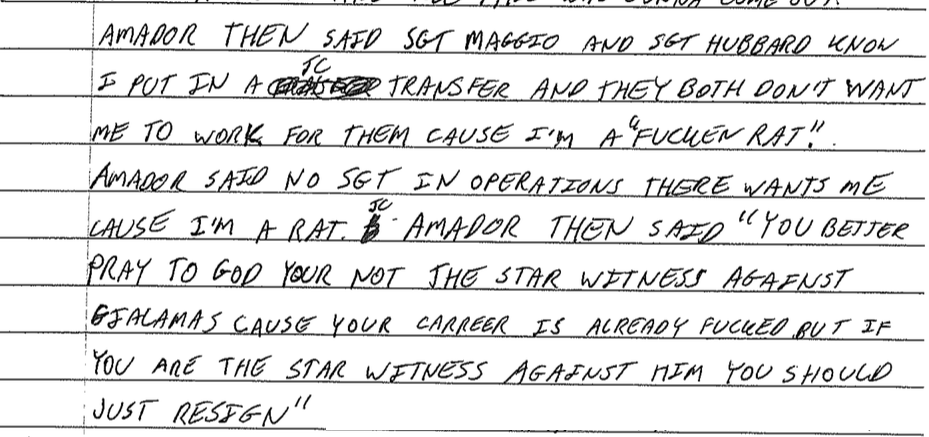 Crystal was warned, “You better pray to god you are not the star witness.” Crystal was told to watch his back.
Crystal was warned, “You better pray to god you are not the star witness.” Crystal was told to watch his back.
The next day, Amador contacted Crystal and prompted him to pick up and correct documents Crystal had submitted regarding an unrelated case. Det. Crystal reviewed the documents in question, then reported back to Det. Amador that there were no errors to be found. Amador then ordered Crystal to change the date on the forms to a different day that did not match the police report. When Crystal refused, Amador became increasingly agitated, warned Crystal, “Change the date, or I can charge you departmentally, or give me the $100 back.”
Sgt. Amador was ordering Crystal to falsify documents. Crystal was acutely aware of the ramifications if caught committing any act of misconduct. Such a violation would make him ineligible to testify in court against Gialamas and Williams.
Concerned that his superior officer might falsify the documents himself, Det. Crystal photocopied the documents before returning them, along with the $100 he was coerced into giving Amador in cash. Amador tore up the original documents after receiving the money, and did not supply Crystal with a receipt.
In November 2012, soon after showing the journal to ASA Shelly Glenn in the state’s attorney office (which by now included the fact that Amador had ordered Crystal to falsify documents) a rat appeared on Crystal’s car with its head under the windshield wiper and its guts torn out. Shelly Glenn had replaced ASA Jan Bledsoe, who who had resigned mid-investigation under threat of being fired relative to a separate issue. Glenn was good friends with the wife of Sgt. Amador.
Det. Crystal filed a police report about the rat, but there was never any actual investigation.
The case is referred to as #ratgate because of this particular action.
The harassment quickly manifested into actions which put Joe Crystal’s life in danger, including, as had occurred decades earlier to Frank Serpico, fellow officers refusing to have Crystal’s back in dangerous situations.
At the end of May, 2012, Detective Crystal lost out on a new assignment in the VRO Squad (violent repeat offender) based upon, according to Lt. M. Fries, his perceived inability to work ‘in the gray area.’ He was effectively being punished by the department for his integrity.
While on duty, routine calls for back-up were not dispatched. Detective Crystal feared for his safety by November, 2012.
In return for having displayed honor and dedication to justice by upholding his oath as a police officer, Detective Joe Crystal was rewarded with threats and retaliation from co-workers and superior officers.
Having failed to support Crystal as a whistleblower, Baltimore Police Commissioner Anthony Batts eventually requested assistance from outside investigators.
In June 2014, two investigators from Philadelphia PD and two from Montgomery County were assigned, but quickly got off course by opening internal investigations into some of Det. Crystal’s allies. Crystal’s attorney, Nick Panteleakis, said, “… some of Crystal’s allies who have been interviewed by the investigators were labeled ‘suspects’ and the agency opened internal complaints against them, which upset the officers and Crystal. … We said, “That’s not correct, we don’t want open [Internal Affairs] complaints against them.” but they said, “We’re going to keep them open.” Those cases are still open Internal Affairs investigations.
Unfortunately, the investigation didn’t even begin until after the statute of limitation had run out on the offense of the rat on the car, and on any other potential misconduct related to this story.
Conditions escalated. Det. Crystal lost his hard-earned security clearance. He was assigned to cases where instructions from supervisors were confusing and often contradictory, and also bounced from one assignment to another with little to no choice nor explanation. Being subjected to this campaign of attrition : knowing that without proper procedures being followed by fellow officers, and without support from his department, Joe Crystal realized he could not safely continue to serve the public. Not only were the actions of his co-workers dangerous for Det. Crystal, the willingness of his fellow officers to leave him hanging, without backup, also endangered the public.
Having not bothered to do any serious internal investigations into the misconduct by officers in retaliation against Det. Crystal regarding his testimony against Gialamas and Williams, Internal Affairs made time in a hurry to target him in an internal investigation for the misuse of a police vehicle.
In June 2014, while driving an official vehicle with his wife as passenger, someone rear-ended the vehicle. The investigator into Det. Joe Crystal’s responsibility for the accident labeled the accident type ‘Non Preventable.’
However, IA used the opportunity to harass Crystal even more by attempting to sully his record for having allowed his wife to ride in the vehicle. At the time of the incident, there was no actual General Order prohibiting a spouse from riding in an official vehicle.

After waiting three years for Internal Affairs to investigate harassment and threats against him with no response, Crystal was forced to sign a notice of investigation six days after this incident.
Subsequently, a new General Order regarding such use of vehicle was published 4 September 2014. In the precinct, the new order was referred to as ‘Joe Crystal General Order.’
Crystal had already resigned from Baltimore PD, effective the previous day, 3 September 2014, after refusing to sign a proposed Settlement and Release Agreement.
Detective Crystal was and continues to be in fear for his safety and that of his family. Having received no support from Police Commissioner Anthony Batts, his union, or any of his superior officers, Crystal has filed a lawsuit :
‘The law firm of DISCEPOLO LLP has filed a lawsuit on behalf of former Baltimore City Police Department Detective Joseph Crystal against Baltimore Police Commissioner Anthony Batts, Sergeant Robert Amador, and the Baltimore City Police Department with allegations of First Amendment Freedom of Speech retaliation, violation of Maryland wage and hour law, and constructive discharge in retaliation for reporting to the Baltimore City State’s Attorney’s Office an unjustified 2011 physical assault of a drug suspect by other Baltimore City police officers. The Federal Lawsuit is Crystal v Batts. et al, filed in the United States District Court of Maryland, Northern Division, case 1:14-cv-03989-JKB.’
Joe Crystal has been in the news lately, telling his story.
researched, written, and edited by chloe laran and wiseoldsnail
BART and City of Oakland Workers STRIKE (no video for quicker loading)
4 July 2013
As Bay Area Rapid Transit workers continue pushing for fair contracts today by extending the walkout which began on Monday, 1 July, many are still unaware of the issues at hand. Corporate press has been willing to portray workers as selfish and unwilling to negotiate, but union representatives, leadership and those directly working in the negotiations, have a different story to tell. They were more than willing to inform the public how BART management and the City of Oakland has been dishonest, not only in their dealings with Labor, but in their reporting to the citizens of Oakland.
Oakland heated up far beyond the scorching outdoor temperatures Monday, with BART and Oakland City Workers shutting down the city by going on strike. All in all, it was a peaceful day of protest, largely due to support by the Oakland Police Department for the striking workers.
A series of video clips shows how the day went. Quite a few have been transcribed for those who don’t like watching long videos. These statements made by union representatives is crucial to understanding the reason for the walkout.
Away from downtown, stations were quiet. A handful of folks picketed the work yard and at Lake Merritt BART Station, to the glee of honking drivers passing by. A couple of strike captains were willing to speak to the camera.
As we’ve seen in recent years, when OPD does not support the message, they’re happy to deliver whatever violence they can muster to get protestors out of the streets. No such thing occurred on Monday. In fact, officers pulled traffic duty to keep union workers safe as they clogged the corner of 14th and Broadway for a pre-rally noise session.
Meanwhile, Oscar Grant Plaza was set up for the gathering, including this tent set up by radio folks for interviews. The original article with video includes part of an interview with one of the International Federation of Professional and Technical Engineers Local 21, the union which represents some of the workers of the City of Oakland. The IFPTE has a membership of 80,000 in the U.S. and Canada, and has been in existence since 1918.
Next, a firefighter from the American Federation of State, County, and Municipal Employees, in town to support the strike, explained that his own union maybe be out on strike on Thursday and Friday this week. AFSCME ‘is the nation’s largest and fastest growing public services employees union with more than 1.6 million working and retired members.’
Renee Sykes, vice-president of Local Chapter 21 of the IFPTE did a great job of explaining what’s been happening with negotiations for a contract for workers, as their contract expired Sunday night. Again, that video is in the epic video version of this article!
Then it was time to use the little stage which had been set up for speakers. First up was Father John, who invoked the ancestors to bless the striking workers.
Next, Rabbi Lynn Gottlieb offered solidarity to Striking Oakland Workers.
Union Representatives came from all over the country to support bay area workers. The Service Employees International Union an organization of 2.1 million members. Gary Jimenez is East Bay Regional Vice President of SEIU Local 1021. He introduced Roxanne Sanchez, who is Local 1021 President, who in turn introduced Eliseo Medina, SEIU International Secretary-Treasurer. Medina addressed the big picture :::
We don’t need any more walmart jobs in the Bay Area… And sometimes, you also have to stand up to fight for your community, to make sure that we maintain the services the public needs. We need more, not less, library services. We need to insure timely and safe trash pickup. We need graffiti abatement and jobs for our youth. And we need a safe and dependable public transit system. But all of this, all of this begins with workers being treated fairly, and not as the first place to cut. Because we know that the soul of BART and Oakland does not live at City Hall or at the BART headquarters. It lives with the workers who deliver the services every single day, rain or shine. BART and Oakland only works because you do. And that is what this strike is all about : a fight for the future for your families and community. And let me tell ya, that is a fight worth fighting.
But brothers and sisters, you are part of a struggle that’s going on throughout this country : in Michigan, in Texas and Wisconsin, and even in Puerto Rico. A struggle to protect the middle class and the American dream. Workers are standing up and fighting back. They’re saying it’s time for the greedy bankers, the developers, and the corporations to be held accountable, so that they pay their fair share of maintaining vital public services. We don’t want any more bailouts. No more special deals. No more high interest rates on municipal bonds, and no more trafficking, with the mortgage crisis that they created. Enough is enough!
Brothers and sisters, they created the crisis. They need to fix it, and they need to fix it now! Brothers and sisters, this is a tough struggle, but we know that you are tougher. We know that you are up for the fight, and that you will win, because you are right, and because you will not take no for an answer.
We are here today to tell BART and the City of Oakland that you are not alone. You have the full support of the 2.1 million members of SEIU. Your fight is our fight. Your struggle is our struggle. We are one family, and when you take one of us on, you take all of us on!
We are here to help whenever, in whatever way you need, and in the end, we will win. As Martin Luther King Jr. reminded us, ‘The moral arc of the universe is long, but it bends toward justice, and we shall overcome.’ Cesar Chavez taught us, ‘There is nothing a united, determined people cannot accomplish. Si se puede!’
Yes we can and yes we will!
Medina is a tough act to follow, but Bob Schoonover of SEIU Local 721 did fine with his rousing short speech. ‘The economy is all your fault, right? NO IT’S NOT!’
Laphonza Butler is President of SEIU ULTCW … United Long Term Care Worker’s Union, and also president of SEIU California State Council. the ULTCW represents 180,000 in-home care providers and nursing home workers throughout California, making it the largest union of long term care givers in California and the second largest SEIU local in the nation. Butler was at the mic next to keep things fired up :::
We stand with LABOR at the City of Oakland and at BART today! … On behalf of the 700,000 SEIU members of the state of California … I’m here to let all of you know that the state council at every single SEIU Local in California is making phone calls, is knocking on doors, is doing everything it takes to make sure that these agreements get settled, get settled fairly, and that we are winning, not just for ourselves, but that we’re winning for our communities. So on behalf of all 700,000 members of SEIU in California, we stand united with you today, we stand united with you tomorrow, and we’ll be there until the very end.
Pete Castelli is Executive Director and SEIU 1021’s Lead Negotiator for the Oakland contract. He gives us some historical context by telling the story of the group of mainly women clerks who picketed in 1946 in Oakland to get recognition for their union. Other unions supported them then, as is happening now. In 1946, solidarity worked! Castelli had this to say :::
What that’s about is standing up. We’ve seen the banks get their money back. We’ve seen Wall Street makin’ their money back, and we’re being sold out. That’s what this story’s about. That’s what the story at BART’s about, City of Oakland, every union that’s in negotiations. As the economy goes up, they wanna restructure our lives, restructure our jobs and make us consultants, and talk in terms that we’re a liability, when we own this community, we live in this community, we spend money in this community, we are the community.
SEIU Local Chapter 1021 President Dwight McElroy talked about corruption, and dishonest efforts by the city to fool the public :::
The media’s asked me about the negotiations, but this strike is not about only our negotiations. When you have elected leadership, and employed leadership hired by the elected leadership, that you should be able to expect dignity, transparency, and honesty from, and it’s not forthcoming, we, the community and the people, must force those values forward! When you have an administration that is so hell bent on busting the union that they will hide $57 million in a budget – from the community – every dollar that flows to and through the City of Oakland belongs to the citizens. And once it became apparent to us, because of our provisions at the bargaining table, and because we were able to hire experts to evaluate the chicanery, the shell game, and the deceptive budgeting policies that have been coming forth so that the public would be misled into thinking ‘it is the police or services.’ That is not the truth, and it is our obligation to insure that the public dollar be spent in a manner that serves the entirety of the City of Oakland.
We are fortunate to either reside or work in one of the greatest cities in America. And I will not, neither will my co-workers, neither will the partners at the bargaining team – we will not allow some imports from places, some being San Jose, to come in here and misuse, abuse, or in any other way … 100% services to the citizens of the City of Oakland. As far as I’m concerned, it’s either unability [sic] to do the work, or dishonesty. You make your own choice, I’ve made mine.
The word transparency means a clear view, with no object between the viewer and what you’re lookin’ at. That’s the dictionary. Is that what the budget looks like? (nooo, says the crowd) Is that on purpose or on accident?
At the end of the day, I’ll leave you with this. We, as a body : the labor, the union, the communities, and the unrepresented : the people nobody’s talkin’ about : the individuals who are hired at the City of Oakland who have no work rights, who have no health care, who have no benefits – somebody’s got to start speaking up and say ‘you cannot continue to mistreat these individuals.’
Today is the beginning of making some individuals who thought they had the power, and who thought they had the authority, change their modus operandi.
I got a secret to share : I got prayed on at church and the bottom line is this : we know the victory is ours, we just not sure exactly when it’s gonna come. But we’re gonna stand fast, stand together, and the victory will be Oakland’s!
One last thing. Our bargaining team, our negotiator, and our lead seniority person is willing and ready to meet. And, in a meaningful way, not the circus bargaining that’s been going on since march, we are prepared and ready to sit down at any point in time and have a discussion with the city leadership about a fair and honest contract – one that benefits the total city of Oakland.
Let’s not forget. Our, the smallest, the most minute … the least senior person in the City of Oakland, that’s the one we wanna protect, because if we protect that one, everyone else is covered.
Renee Sykes then took the mic on behalf of IFPTE Local 21 : Oakland City workers. Sykes introduced and thanked people who are supporting this strike, including members of other unions.
Then the politicians stepped up. First, Councilmember Desley Brooks, who called out City Administrator for playing with the books. Santana has previously been caught being dishonest, by trying to bury findings of the Frasier Report about the violent actions of Oakland Police against Occupy Oakland. :::
There is no reason that the City of Oakland can’t bargain in good faith. I feel like, sometimes, I’m working for one of those big banks on Wall Street. Y’know the ones who keep makin’ money on your back. And then they forget how they made the money, and they wanna keep it all. We have unanticipated revenues, and yet we told our workers that we couldn’t give them a raise. We have money that the mayor has tucked away, and yet we told our employees that they have to pay for their health care. We are doing better than we’ve done in a long time, and we know that one of the reasons that we are where we are today is because our employees, our civilian employees, gave back $122 million. And so for those people in the community who wonder why today our employees who struggle just to get by need us to turn around and give back, tell ’em there’s 122 million reasons why.
There’s a song that says ‘let them hear you.’ Let them hear you. Let Deanna Santana and the mayor hear you.
I hope, I hope that you’re gonna continue to press, stay together, stay strong, stay focused – you will prevail, thank you.
New councilmember Noel Gallo also joined in to push for respect for employees and a safe, clean city.
Elizabeth Alexander is SEIU vice-president of politics. She called on community groups : Alliance of Californians for Community Empowerment (ACCE) ‘is a multi-racial, democratic, non-profit community organization building power in low to moderate income neighborhoods to stand and fight for social, economic, and racial justice’; walmart union folks Our Walmart; Causa Justa :: Just Cause (CJJC), ‘a multi-racial, grassroots organization building community leadership to achieve justice for low-income San Francisco and Oakland residents’; among others : to show themselves, having come in support. She rattles off : Dan Siegel and Walter Riley (who have both been working to get justice for Alan Blueford, who was murdered by Oakland Police Officer Miguel Masso), Adam & Jeralyn Blueford from Justice for Alan Blueford Coalition, HipHop Congress, EBASE, Occupy Labor Solidarity, Harvey Milk Democratic Club, San Francisco Latino Democratic Club, Dream Act Dreamers, among others.
Dominic Ware spoke well for Our Walmart. He reminded people about their recent two-week strike in which two women were fired.
Alia Phelps spoke from ACCE. She addressed the issues of the strike affecting low-income people, but said low-income people experience transportation problems all the time, not only during this strike. She points out the many millions lost by BART and AC Transit to the banks.
Civil Rights Attorney and Activist Dan Siegel joked about it being hotter inside city hall than outside (temperature in the eighties) … talked about services : library, roads, programs for elders & seniors, decent wages, benefits, and no more furloughs for city employees. He warned ‘this is not gonna end today.’ He finished up with a valid claim that we have enough police with 650 officers … that we don’t need more, we need them to be deployed appropriately … ‘out from behind their desks.’
Siegel was followed by an Oakland resident activist who talked about having been a long time on this trail to end poverty :::
Thank you for standing up and giving the labor movement of Oakland and the country a backbone again. … Let me just say, as a soldier that’s been on this trail a long time about the business of eliminating poverty, we understand that the true place to get the money is from Wall Street and the banks. When have you seen a banker crying broke? When have you seen a foreclosure on them? The foreclosures are on our community. So only when we get about this business, not simply a protest, but a fight for a different vision. We’re about the business of transforming, so that our communities, our generations of children, so that our schools and libraries, so that our we, the people, might thrive, and not merely survive …
If ya listen to some of the radio shows, they say, ‘look, I haven’t got a raise, a break, I haven’t got extra time, why should they get it?’ What’s so important about this strike : this is about rejecting the proposals of divide and conquer and standing up and stating : the one percent needs to be pushed to the side, so we, the ninety nine percent, can handle our business for the future forward …
We don’t have to live like this. We ain’t gotta have people pushing carts and living like dogs. Only to the degree that we allow it, will it stay that way. So thank you for helping to wake people up. Now it’s our job to link up the struggles and build this movement so we might get the justice we need. Economic justice and security now, thank you.
Robbie Clark from Causa Justa thanks workers for daring to strike :::
We’re standing in solidarity because we know that the type of Oakland that working class power needs to build is the type of Oakland that’s gonna prioritize the needs of all Oakland residents. And so we’re united. That means Oakland’s workers, Oakland’s tenants, Oakland’s homeowners, the public workers, everybody who is in Oakland, living in Oakland like I have for my entire life. We have to make sure that our needs of our communities are put first, before the needs of big corporations.
We thank you for your courage, for taking this important step toward making sure that the rights of all people are respected. This is a historic moment. It’s time that we take back the power that we have in Oakland, and build an Oakland for the people the way that it’s supposed to be.
From an article in Businesswire :
“BART workers want just two things in these negotiations,” said Antonette Bryant, president of ATU 1555, which represents BART operators and station agents. “We want to negotiate a fair pay package after going five years with no increases, and we want the district to institute some basic changes that will improve system safety for riders and BART workers.”
ATU stands for Amalgamate Transit Union, and ‘is comprised of over 190,000 members, including: metropolitan, interstate, and school bus drivers; paratransit, light rail, subway, streetcar, and ferry boat operators; mechanics and other maintenance workers; clerks, baggage handlers, municipal employees, and others. ATU can be found in 44 U.S. states and the District of Columbia, and nine Canadian provinces.’
Here’s what she had to say on Monday at Oscar Grant Plaza :::
Brothers and sisters, good afternoon. C’mon now, GOOD AFTERNOON! That’s what I’m talking about. …
We stand in solidarity with the City of Oakland workers, we stand in solidarity with the IFPTE, we stand in solidarity with every working family member that is on strike…
I’ve heard it resonate throughout the day, about every company that’s trying to tell their employees, ‘you’ve gotta give back, give back, give back; there gotta be cuts, cuts, cuts.’ We are on strike today for respect, for safety, for fair labor practices and for our families. We know you are as well.
I want each and every one of you to reach in your pocket and see if you have four quarters and pull ’em out. This is not rhetorical. Do you have four quarters? Pull ’em out. Yesterday that’s what BART offered our employees : a dollar a year. One dollar. Do not be fooled by the press that is saying eight percent. It is one dollar.
In that eight percent they forgot to indicate they wanted us to give back to pension, which is 92% funded, they wanted us to give back on healthcare. We have a proud, strong union family at BART, and we are proud to stand with you out here on this struggle.
We do difficult jobs, like many of you. We have the honor of working with the public, and the systems that have been cut back, where services are reduced. So patrons are angry and assaults are up. Like many of you, we have equipment that causes us to be injured. And our company does not want to treat our injured workers fairly. We have put through information that will get us back to work. They are rejecting. Instead they’re offering us a dollar. They’re paying out of state consultants $400,000 … [sound problems]
They paid an out of state consultant four hundred thousand dollars for part time work to come in and try and tear up our contract. [more sound problems . then finally someone brings bullhorns!]
I’m so impressed to have heard brother McElroy, who said this, ‘It will take a strike to get the truth, then that’s what we will do.’
The dollar they’re offering us is a dollar a year : not an hour, not a day, not a week, not a month, but one dollar a year. If it takes a strike or two to get their attention, then that’s what we will do. I ask you to share this message with your friends and family, because it’s being distorted by BART.
An injury to one is an injury to all. Let them know that their commute is our workplace, and we wanna do it right and we wanna provide a safe working environment and a safe riding environment.
We stand with you today. ATU!
Next up were Des Patten and John Arantes, professional and general SEIU chapter presidents.
The formal rally was concluded with a song.
But that wasn’t the end of the action on Monday. Workers returned to the picket lines, covering the doors of city buildings to assure that nobody entered without at least being informed what it means to cross a picket line.
The city had promised no parking enforcement during the IFPTE’s one day action, but people had reported receiving parking tickets. While keeping vigil, picketers witnessed a meter maid returning from a day of ticketing cars!
A few of screenshots, in case Oakland City workers want to know who crossed the line :::
On Tuesday, the Oakland Tribune reported that the City will be forgiving parking tickets which were issued during the strike.
…
much thanks to aredridel for editorial support!
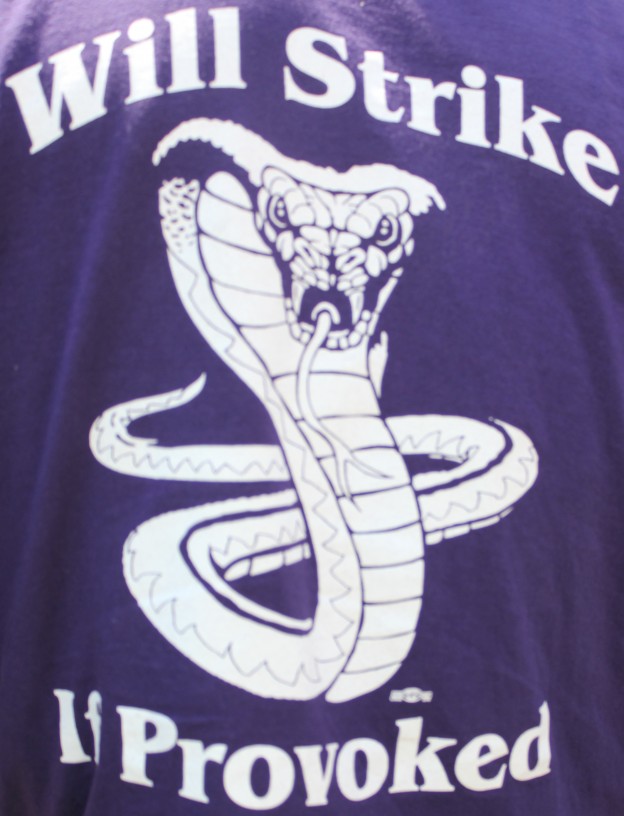
BART and City of Oakland Workers STRIKE
4 July 2013
As Bay Area Rapid Transit workers continue pushing for fair contracts today by extending the walkout which began on Monday, 1 July, many are still unaware of the issues at hand. Corporate press has been willing to portray workers as selfish and unwilling to negotiate, but union representatives, leadership and those directly working in the negotiations, have a different story to tell. They were more than willing to inform the public how BART management and the City of Oakland has been dishonest, not only in their dealings with Labor, but in their reporting to the citizens of Oakland.
Oakland heated up far beyond the scorching outdoor temperatures Monday, with BART and Oakland City Workers shutting down the city by going on strike. All in all, it was a peaceful day of protest, largely due to support by the Oakland Police Department for the striking workers.
Away from downtown, stations were quiet. A handful of folks picketed the work yard and at Lake Merritt BART Station, to the glee of honking drivers passing by. A couple of strike captains were willing to speak to the camera.
As we’ve seen in recent years, when OPD does not support the message, they’re happy to deliver whatever violence they can muster to get protestors out of the streets. No such thing occurred on Monday. In fact, officers pulled traffic duty to keep union workers safe as they clogged the corner of 14th and Broadway for a pre-rally noise session.
Meanwhile, Oscar Grant Plaza was set up for the gathering, including this tent set up by radio folks for interviews. Here’s part of an interview with one of the International Federation of Professional and Technical Engineers Local 21, the union which represents the workers of the City of Oakland. The IFPTE has a membership of 80,000 in the U.S. and Canada, and has been in existence since 1918.
Next, a firefighter from the American Federation of State, County, and Municipal Employees, in town to support the strike, explained that his own union maybe be out on strike on Thursday and Friday this week. AFSCME ‘is the nation’s largest and fastest growing public services employees union with more than 1.6 million working and retired members.’
Renee Sykes, vice-president of Local Chapter 21 of the IFPTE did a great job of explaining what’s been happening with negotiations for a contract for workers, as their contract expired Sunday night.
Then it was time to use the little stage which had been set up for speakers. First up was Father John, who invoked the ancestors to bless the striking workers.
Next, Rabbi Lynn Gottlieb offered solidarity to Striking Oakland Workers.
Union Representatives came from all over the country to support bay area workers. The Service Employees International Union an organization of 2.1 million members. Gary Jimenez is East Bay Regional Vice President of SEIU Local 1021. He introduced Roxanne Sanchez, who is Local 1021 President, who in turn introduced Eliseo Medina, SEIU International Secretary-Treasurer. Medina addressed the big picture :::
We don’t need any more walmart jobs in the Bay Area… And sometimes, you also have to stand up to fight for your community, to make sure that we maintain the services the public needs. We need more, not less, library services. We need to insure timely and safe trash pickup. We need graffiti abatement and jobs for our youth. And we need a safe and dependable public transit system. But all of this, all of this begins with workers being treated fairly, and not as the first place to cut. Because we know that the soul of BART and Oakland does not live at City Hall or at the BART headquarters. It lives with the workers who deliver the services every single day, rain or shine. BART and Oakland only works because you do. And that is what this strike is all about : a fight for the future for your families and community. And let me tell ya, that is a fight worth fighting.
But brothers and sisters, you are part of a struggle that’s going on throughout this country : in Michigan, in Texas and Wisconsin, and even in Puerto Rico. A struggle to protect the middle class and the American dream. Workers are standing up and fighting back. They’re saying it’s time for the greedy bankers, the developers, and the corporations to be held accountable, so that they pay their fair share of maintaining vital public services. We don’t want any more bailouts. No more special deals. No more high interest rates on municipal bonds, and no more trafficking, with the mortgage crisis that they created. Enough is enough!
Brothers and sisters, they created the crisis. They need to fix it, and they need to fix it now! Brothers and sisters, this is a tough struggle, but we know that you are tougher. We know that you are up for the fight, and that you will win, because you are right, and because you will not take no for an answer.
We are here today to tell BART and the City of Oakland that you are not alone. You have the full support of the 2.1 million members of SEIU. Your fight is our fight. Your struggle is our struggle. We are one family, and when you take one of us on, you take all of us on!
We are here to help whenever, in whatever way you need, and in the end, we will win. As Martin Luther King Jr. reminded us, ‘The moral arc of the universe is long, but it bends toward justice, and we shall overcome.’ Cesar Chavez taught us, ‘There is nothing a united, determined people cannot accomplish. Si se puede!’
Yes we can and yes we will!
Medina is a tough act to follow, but Bob Schoonover of SEIU Local 721 did fine with this rousing short speech. ‘The economy is all your fault, right? NO IT’S NOT!’
Laphonza Butler is President of SEIU ULTCW … United Long Term Care Worker’s Union, and also president of SEIU California State Council. the ULTCW represents 180,000 in-home care providers and nursing home workers throughout California, making it the largest union of long term care givers in California and the second largest SEIU local in the nation. Butler was at the mic next to keep things fired up :::
We stand with LABOR at the City of Oakland and at BART today! … On behalf of the 700,000 SEIU members of the state of California … I’m here to let all of you know that the state council at every single SEIU Local in California is making phone calls, is knocking on doors, is doing everything it takes to make sure that these agreements get settled, get settled fairly, and that we are winning, not just for ourselves, but that we’re winning for our communities. So on behalf of all 700,000 members of SEIU in California, we stand united with you today, we stand united with you tomorrow, and we’ll be there until the very end.
Pete Castelli is Executive Director and SEIU 1021’s Lead Negotiator for the Oakland contract. He gives us some historical context by telling the story of the group of mainly women clerks who picketed in 1946 in Oakland to get recognition for their union. Other unions supported them then, as is happening now. In 1946, solidarity worked! Castelli had this to say :::
What that’s about is standing up. We’ve seen the banks get their money back. We’ve seen Wall Street makin’ their money back, and we’re being sold out. That’s what this story’s about. That’s what the story at BART’s about, City of Oakland, every union that’s in negotiations. As the economy goes up, they wanna restructure our lives, restructure our jobs and make us consultants, and talk in terms that we’re a liability, when we own this community, we live in this community, we spend money in this community, we are the community.
SEIU Local Chapter 1021 President Dwight McElroy talked about corruption, and dishonest efforts by the city to fool the public :::
The media’s asked me about the negotiations, but this strike is not about only our negotiations. When you have elected leadership, and employed leadership hired by the elected leadership, that you should be able to expect dignity, transparency, and honesty from, and it’s not forthcoming, we, the community and the people, must force those values forward! When you have an administration that is so hell bent on busting the union that they will hide $57 million in a budget – from the community – every dollar that flows to and through the City of Oakland belongs to the citizens. And once it became apparent to us, because of our provisions at the bargaining table, and because we were able to hire experts to evaluate the chicanery, the shell game, and the deceptive budgeting policies that have been coming forth so that the public would be misled into thinking ‘it is the police or services.’ That is not the truth, and it is our obligation to insure that the public dollar be spent in a manner that serves the entirety of the City of Oakland.
We are fortunate to either reside or work in one of the greatest cities in America. And I will not, neither will my co-workers, neither will the partners at the bargaining team – we will not allow some imports from places, some being San Jose, to come in here and misuse, abuse, or in any other way … 100% services to the citizens of the City of Oakland. As far as I’m concerned, it’s either unability [sic] to do the work, or dishonesty. You make your own choice, I’ve made mine.
The word transparency means a clear view, with no object between the viewer and what you’re lookin’ at. That’s the dictionary. Is that what the budget looks like? (nooo, says the crowd) Is that on purpose or on accident?
At the end of the day, I’ll leave you with this. We, as a body : the labor, the union, the communities, and the unrepresented : the people nobody’s talkin’ about : the individuals who are hired at the City of Oakland who have no work rights, who have no health care, who have no benefits – somebody’s got to start speaking up and say ‘you cannot continue to mistreat these individuals.’
Today is the beginning of making some individuals who thought they had the power, and who thought they had the authority, change their modus operandi.
I got a secret to share : I got prayed on at church and the bottom line is this : we know the victory is ours, we just not sure exactly when it’s gonna come. But we’re gonna stand fast, stand together, and the victory will be Oakland’s!
One last thing. Our bargaining team, our negotiator, and our lead seniority person is willing and ready to meet. And, in a meaningful way, not the circus bargaining that’s been going on since march, we are prepared and ready to sit down at any point in time and have a discussion with the city leadership about a fair and honest contract – one that benefits the total city of Oakland.
Let’s not forget. Our, the smallest, the most minute … the least senior person in the City of Oakland, that’s the one we wanna protect, because if we protect that one, everyone else is covered.
Renee Sykes then took the mic on behalf of IFPTE Local 21 : Oakland City workers. Sykes introduced and thanked people who are supporting this strike, including members of other unions.
Then the politicians stepped up. First, Councilmember Desley Brooks, who called out City Administrator for playing with the books. Santana has previously been caught being dishonest, by trying to bury findings of the Frasier Report about the violent actions of Oakland Police against Occupy Oakland. :::
There is no reason that the City of Oakland can’t bargain in good faith. I feel like, sometimes, I’m working for one of those big banks on Wall Street. Y’know the ones who keep makin’ money on your back. And then they forget how they made the money, and they wanna keep it all. We have unanticipated revenues, and yet we told our workers that we couldn’t give them a raise. We have money that the mayor has tucked away, and yet we told our employees that they have to pay for their health care. We are doing better than we’ve done in a long time, and we know that one of the reasons that we are where we are today is because our employees, our civilian employees, gave back $122 million. And so for those people in the community who wonder why today our employees who struggle just to get by need us to turn around and give back, tell ’em there’s 122 million reasons why.
There’s a song that says ‘let them hear you.’ Let them hear you. Let Deanna Santana and the mayor hear you.
I hope, I hope that you’re gonna continue to press, stay together, stay strong, stay focused – you will prevail, thank you.
New councilmember Noel Gallo also joined in to push for respect for employees and a safe, clean city.
Elizabeth Alexander is SEIU vice-president of politics. She called on community groups : Alliance of Californians for Community Empowerment (ACCE) ‘is a multi-racial, democratic, non-profit community organization building power in low to moderate income neighborhoods to stand and fight for social, economic, and racial justice’; walmart union folks Our Walmart; Causa Justa :: Just Cause (CJJC), ‘a multi-racial, grassroots organization building community leadership to achieve justice for low-income San Francisco and Oakland residents’; among others : to show themselves, having come in support. She rattles off : Dan Siegel and Walter Riley (who have both been working to get justice for Alan Blueford, who was murdered by Oakland Police Officer Miguel Masso), Adam & Jeralyn Blueford from Justice for Alan Blueford Coalition, HipHop Congress, EBASE, Occupy Labor Solidarity, Harvey Milk Democratic Club, San Francisco Latino Democratic Club, Dream Act Dreamers, among others.
Dominic Ware spoke well for Our Walmart. He reminded people about their recent two-week strike in which two women were fired.
Alia Phelps spoke from ACCE. She addressed the issues of the strike affecting low-income people, but said low-income people experience transportation problems all the time, not only during this strike. She pointed out the many millions lost by BART and AC Transit to the banks.
Civil Rights Attorney and Activist Dan Siegel joked about it being hotter inside city hall than outside (temperature in the eighties) … talked about services : library, roads, programs for elders & seniors, decent wages, benefits, and no more furloughs for city employees. He warns ‘this is not gonna end today.’ He finished up with a valid claim that we have enough police with 650 officers … that we don’t need more, we need them to be deployed appropriately … ‘out from behind their desks.’
Siegel was followed by an Oakland resident activist [feel free to enlighten the author as to her name, readers] who talked about having been a long time on this trail to end poverty :::
Thank you for standing up and giving the labor movement of Oakland and the country a backbone again. … Let me just say, as a soldier that’s been on this trail a long time about the business of eliminating poverty, we understand that the true place to get the money is from Wall Street and the banks. When have you seen a banker crying broke? When have you seen a foreclosure on them? The foreclosures are on our community. So only when we get about this business, not simply a protest, but a fight for a different vision. We’re about the business of transforming, so that our communities, our generations of children, so that our schools and libraries, so that our we, the people, might thrive, and not merely survive …
If ya listen to some of the radio shows, they say, ‘look, I haven’t got a raise, a break, I haven’t got extra time, why should they get it?’ What’s so important about this strike : this is about rejecting the proposals of divide and conquer and standing up and stating : the one percent needs to be pushed to the side, so we, the ninety nine percent, can handle our business for the future forward …
We don’t have to live like this. We ain’t gotta have people pushing carts and living like dogs. Only to the degree that we allow it, will it stay that way. So thank you for helping to wake people up. Now it’s our job to link up the struggles and build this movement so we might get the justice we need. Economic justice and security now, thank you.
Robbie Clark from Causa Justa thanks workers for daring to strike :::
We’re standing in solidarity because we know that the type of Oakland that working class power needs to build is the type of Oakland that’s gonna prioritize the needs of all Oakland residents. And so we’re united. That means Oakland’s workers, Oakland’s tenants, Oakland’s homeowners, the public workers, everybody who is in Oakland, living in Oakland like I have for my entire life. We have to make sure that our needs of our communities are put first, before the needs of big corporations.
We thank you for your courage, for taking this important step toward making sure that the rights of all people are respected. This is a historic moment. It’s time that we take back the power that we have in Oakland, and build an Oakland for the people the way that it’s supposed to be.
From an article in Businesswire :
“BART workers want just two things in these negotiations,” said Antonette Bryant, president of ATU 1555, which represents BART operators and station agents. “We want to negotiate a fair pay package after going five years with no increases, and we want the district to institute some basic changes that will improve system safety for riders and BART workers.”
ATU stands for Amalgamate Transit Union, and ‘is comprised of over 190,000 members, including: metropolitan, interstate, and school bus drivers; paratransit, light rail, subway, streetcar, and ferry boat operators; mechanics and other maintenance workers; clerks, baggage handlers, municipal employees, and others. ATU can be found in 44 U.S. states and the District of Columbia, and nine Canadian provinces.’
Here’s what she had to say on Monday at Oscar Grant Plaza :::
Brothers and sisters, good afternoon. C’mon now, GOOD AFTERNOON! That’s what I’m talking about. …
We stand in solidarity with the City of Oakland workers, we stand in solidarity with the IFPTE, we stand in solidarity with every working family member that is on strike…
I’ve heard it resonate throughout the day, about every company that’s trying to tell their employees, ‘you’ve gotta give back, give back, give back; there gotta be cuts, cuts, cuts.’ We are on strike today for respect, for safety, for fair labor practices and for our families. We know you are as well.
I want each and every one of you to reach in your pocket and see if you have four quarters and pull ’em out. This is not rhetorical. Do you have four quarters? Pull ’em out. Yesterday that’s what BART offered our employees : a dollar a year. One dollar. Do not be fooled by the press that is saying eight percent. It is one dollar.
In that eight percent they forgot to indicate they wanted us to give back to pension, which is 92% funded, they wanted us to give back on healthcare. We have a proud, strong union family at BART, and we are proud to stand with you out here on this struggle.
We do difficult jobs, like many of you. We have the honor of working with the public, and the systems that have been cut back, where services are reduced. So patrons are angry and assaults are up. Like many of you, we have equipment that causes us to be injured. And our company does not want to treat our injured workers fairly. We have put through information that will get us back to work. They are rejecting. Instead they’re offering us a dollar. They’re paying out of state consultants $400,000 … [sound problems]
They paid an out of state consultant four hundred thousand dollars for part time work to come in and try and tear up our contract. [more sound problems . then finally someone brings bullhorns!]
I’m so impressed to have heard brother McElroy, who said this, ‘It will take a strike to get the truth, then that’s what we will do.’
The dollar they’re offering us is a dollar a year : not an hour, not a day, not a week, not a month, but one dollar a year. If it takes a strike or two to get their attention, then that’s what we will do. I ask you to share this message with your friends and family, because it’s being distorted by BART.
An injury to one is an injury to all. Let them know that their commute is our workplace, and we wanna do it right and we wanna provide a safe working environment and a safe riding environment.
We stand with you today. ATU!
Next up were Des Patten and John Arantes, professional and general SEIU chapter presidents.
The formal rally was concluded with a song.
But that wasn’t the end of the action on Monday. Workers returned to the picket lines, covering the doors of city buildings to assure that nobody entered without at least being informed what it means to cross a picket line.
The city had promised no parking enforcement during the IFPTE’s one day action, but people had reported receiving parking tickets. While keeping vigil, picketers witnessed a meter maid returning from a day of ticketing cars!
A few of screenshots, in case Oakland City workers want to know who crossed the line :::
On Tuesday, the Oakland Tribune reported that the City will be forgiving parking tickets which were issued during the strike.
…
much thanks to aredridel for editorial support!
Kern County Deputies Who Beat David Silva Doxed by Anonymous
Kern County Sheriffs’ Department
Sheriff
Donny Youngblood
1350 Norris Rd
Bakersfield, California 93308
(661)391-7500
http://www.kernsheriff.com
Unarmed Father of 4 David Sal Silva Beaten to death by 9 Kern County Officers
“I took the unprecedented step of asking the FBI to conduct a parallel investigation,” Youngblood told The Times. “Our credibility is at stake here.”
The seven deputies and two California Highway Patrol officers tried to take Silva into custody early Wednesday morning after law enforcement received a report of a possibly intoxicated man outside Kern Medical Center, according to the sheriff’s department.
Silva struggled with them, deputies said. A canine was deployed, batons were used and Silva, 33, was pronounced dead at KMC less than an hour later after experiencing trouble breathing.
Witnesses have said Silva appeared to die right in front of them, minutes after officers struck him several times with batons.
The coroner’s office, which reports to Sheriff Donny Youngblood, said Friday that the cause of death hasn’t been determined and is pending toxicology and microscopic studies. Those studies could take as long as four months.
VIDEO Along with Witness Accounts
Officers Involved
Sgt. Douglas Sword On Force > 13 1/2 years
Deputy David Stephens On Force > 5 1/2 years
Deputy Brian Brock On Force > 1 1/2 years
Deputy Luis Almanza On Force > 3 years
Deputy Jeffrey Kelly On Force > 4 years
Deputy Tanner Miller On Force > 4 1/2 years
Deputy Ryan Greer On Force > 4 1/2 years
DOX Kern County Sheriff’s Department
Sheriff Donny Youngblood
On Monday May 13th, 2013 Kern County Sheriff Donny Youngblood requested the Federal Bureau of Investigation (FBI) analyze the two cell phones seized pursuant to a search warrant related to the in custody death of David Silva. Specifically, Sheriff Youngblood requested the FBI conduct a forensic analysis of the contents of the cell phones. A request to the FBI was made following the preliminary results of the Bakersfield Police Department’s analysis of the phones. The analysis by the Bakersfield Police Department confirmed the existence of video footage related to this incident on one phone and no video footage on the second phone. This prompted the subsequent request for further analysis by the FBI. Sheriff Youngblood also requested the FBI conduct a parallel investigation into the circumstances surrounding this incident. Today, Sheriff’s Office personnel transported the phones to the FBI Sacramento Office for analysis.
UPDATE : The Kern County Sheriff’s Office has decided to postpone Law Enforcement Day at the Sheriff’s Office, which had been scheduled for Saturday May 18th. The Sheriff’s Office planned the event as a day for the community to tour our facility, view demonstrations from several of our specialized units such as the Bomb Squad and K-9 unit, and talk to the men and women who work for the Sheriff’s Office protecting the citizens of Kern County every day. Unfortunately due to recent events, the Sheriff’s Office felt it would be appropriate to postpone the event. The Sheriff’s Office apologizes to those community members who had planned on attending the event. The event will be re-scheduled in the future.
——————————————————————————————————————-
Sgt. DOUGLAS SWORD
Email: SwordD@co.kern.ca.us
Sgt. Doug and his wife Mary Sword live on 2120 Jason Street Bakersfield CA.
—————————————————————————————————————–
Officer Ryan Greer lives with wife Tarrah T Greer at
6901 Hooper Ave
Bakersfield , California 93308
661-391-3175
Property Information >
Estimated Value: $261,900
Monthly Value Change: $4,000
Last Updated: 04/22/2013
Bedroom(s): 4
Bathroom(s): 2.75
Square Feet: 2,634
Property Type: Single Family Home
Year Built: 1972
Monthly Est. Mortgage: $1,190
Monthly Est. Insurance: $76
Monthly Property Tax: $269
Price Per SqFt: $99
Last Sold Date: 05/29/2003
Last Sold Price: $220,000
We Are Anonymous
We Are Legion
We Do Not Forgive
We Do Not Forget
Expect Us
n4m3le55sKy
Bradley Manning’s Voice
Freedom of the Press Foundation Publishes Leaked Audio of Bradley Manning’s Statement
The U.S. Army Military District of Washington released a statement to POLITICO:
“The U.S. Army Military District of Washington has notified the military judge presiding over the United States vs. Pfc. Bradley Manning court martial that there was a violation of the rules for court. The U.S. Army is currently reviewing the procedures set in place to safeguard the security and integrity of the legal proceedings, and ensure Pfc. Manning receives a fair and impartial trial.”
all thanks to freedom of the press foundation for this work
A Very Real Discussion About Torture
13 april 2012
Guards at Guantanamo Prison fired ‘less than lethal’ rounds at hunger striking victims of U.S. illegal detention today in an effort to forcibly separate them from the group environment into solitary cages. This action by guards was done in an attempt to force and end to what has been, so far, a month-long hunger strike by prisoners in protest against the treatment and ongoing illegal detention there. The hunger strike has received little to no corporate news coverage since it began.
How did the use of torture become acceptable? Who was behind the implementation of tactics known to not only be illegal in the United States, but in direct violation of all international agreements? In this video, Marc LaMont hill from Huffpost Live interviews five people with direct, personal experience from every angle of the issue.
Brandon Neely served in the army at Guantanamo Bay, and was lied to throughout his service to get him to follow illegal orders. Neely stepped out on a legal limb to tell his story, in direct violation of a nondisclosure agreement required by all Guantanamo personnel. His experience shows how guards in prisons are put into difficult, even abusive conditions. He speaks about receiving threats for speaking out about torture.
The Interrogator author Glenn Carle, a former CIA agent, tells how it felt to find that his ‘subject’ was not a criminal at all, let alone someone who deserved to be extrajudiciously incarcerated without charges or counsel.
Georgetown University Philosophy and Ethics Professor Nancy Sherman, author of five books including The Untold War, reminds us that soldiers doing this type of service are deeply affected by the actions they are ordered to take. Neely agrees with this assessment. When learning the truth about the reasons for incarceration of many of the detainees, the guilt suffered by some is debilitating. Shermann talks about how torture affects not only victims, but perpetrators and their families and communities.
We also hear from medical expert Alan Keller, who is associate professor of Medicine and director of Bellevue/NYU Program for Survivors of Torture, and Omar Deghayes, a detainee who suffered the loss of one eye during his six years at Guantanamo for what became a revolving door of unsubstantiated accusations. Deghayes dispels any myth that torture is somehow the exception to the rule, clarifying in no uncertain terms that torture at Guantanamo is systemic.
Report on the Extrajudicial Killings of 120 Black People
Former Gitmo Guard Recalls Abuse, Climate of Fear
Associated Press
by Mike Melia
February 14, 2009
SAN JUAN, Puerto Rico (AP) — Army Pvt. Brandon Neely was scared when he took Guantanamo’s first shackled detainees off a bus. Told to expect vicious terrorists, he grabbed a trembling, elderly detainee and ground his face into the cement — the first of a range of humiliations he says he participated in and witnessed as the prison was opening for business.
Neely has now come forward in this final year of the detention center’s existence, saying he wants to publicly air his feelings of guilt and shame about how some soldiers behaved as the military scrambled to handle the first alleged al-Qaida and Taliban members arriving at the
isolated U.S. Navy base.
His account, one of the first by a former guard describing abuses at Guantanamo, describes a chaotic time when soldiers lacked clear rules for dealing with detainees who were denied many basic comforts. He says the circumstances changed quickly once monitors from the International Committee of the Red Cross arrived.
The military says it has gone to great lengths in the seven years since then to ensure the prisoners’ safe treatment. “Our policy is to treat detainees humanely,” said Navy Cmdr. Jeffrey Gordon, a Pentagon spokesman.
After the Sept. 11 attacks and the swift U.S. military response in Afghanistan, the Bush administration had little time to prepare for the hundreds of prisoners being swept up on the battlefield. The U.S. Southern Command was given only a few weeks notice before they began arriving at Guantanamo Bay Naval Base in Cuba — a locale thought to be beyond the reach of U.S. and Cuban law. The first arrivals were housed in cages that had been used for Haitian
migrants almost a decade earlier.
Now President Barack Obama is committed to closing the prison and finding new ways of handling the remaining 245 detainees as well as any future terror suspects. Human rights groups say his pledge to adhere to long established laws and treaties governing prisoner treatment is essential if the United States hopes to prevent abuses in the future.
“If Guantanamo has taught us anything, it’s the importance of abiding by the rule of law,” said
Jennifer Daskal, senior counterterrorism counsel for Human Rights Watch.
Or as Neely put it in an interview with The Associated Press this week, “The stuff I did and the stuff I saw was just wrong.”
Neely, a burly Texan who served for a year in Iraq after his six months at Guantanamo, received an honorable discharge last year, with the rank of specialist, and now works as a law enforcement officer in the Houston area. He is also president of the local chapter of Iraq Veterans Against the War.
An urge to tell his story led him to the University of California at Davis’ Guantanamo Testimonials Project, an effort to document accounts of prisoner abuse. It includes public statements from three other former guards, but Neely was the first to grant researchers an interview. He also spoke extensively with the AP.
Testimony from the other guards echoes some of Neely’s concerns. One of the other guards, Sean Baker, described in an interview with CBS’ “60 Minutes” how he was beaten and hospitalized by fellow soldiers in a January 2003 training drill in which he wore an orange jumpsuit to play the role of a detainee.
Terry C. Holdbrooks Jr. told the Web site cageprisoners.com in an interview this month that he saw several abuses during his service at Guantanamo in 2003, including detainees subjected to cold temperatures and loud music, and he later converted to Islam.
Neely, 28, describes a litany of cruel treatment by his fellow soldiers, including beatings and humiliations he said were intended only to deliver physical or psychological pain.
A spokeswoman for the detention center, Navy Cmdr. Pauline Storum, said she could not comment on “what one individual may recall” from seven years ago. “Thousands of service members have honorably carried out their duties here in what is an arduous and scrutinized environment,” she said.
Neely’s account sheds new light on the early days of Guantanamo, where guards were hastily deployed in January 2002 and were soon confronted by men stumbling out of planes, shackled and wearing blackout goggles. They were held in chain-link cages and moved to more permanent structures three months later.
The soldiers, many of them still in their teens, had no detailed standard operating procedures and were taught hardly anything about the Geneva Conventions, which provide guidelines for humane treatment of prisoners of war, Neely said, though some learned about them on their own initiative.
“Most of us who had everyday contact with the detainees were really young,” he said in the AP telephone interview.
Army Col. Bill Costello acknowledged that Guantanamo-specific procedures developed over time, but insisted that the guards had strict direction from the start. “This was a professional guard force,” said Costello, who served as a Guantanamo spokesman during its first months and now speaks for the U.S. Southern Command in Miami, which oversees the base.
Only months had passed since the Sept. 11 attacks, and Neely said many of the guards wanted revenge. Especially before the first Red Cross visit, he said guards were seizing on any apparent infractions to “get some” by hurting the detainees. The soldiers’ behavior seemed justified at the time, he said, because they were told “these are the worst terrorists in the world.”
He said one medic punched a handcuffed prisoner in the face for refusing to swallow a liquid nutritional supplement, and another bragged about cruelly stretching a prisoner’s torn muscles during what was supposed to be physical therapy treatments.
He said detainees were forced to submit to take showers and defecate into buckets in full view of female soldiers, against Islamic customs. When a detainee yelled an expletive at a female guard, he said a crew of soldiers beat the man up and held him down so that the woman could
repeatedly strike him in the face.
Neely says he feels personally ashamed for how he treated that elderly detainee the first day. As he recalls it, the man made a movement to resist on his way to his cage, and he responded by shoving the shackled man headfirst to the ground, bruising and scraping his face. Other soldiers hog-tied him and left him in the sun for hours.
Only later did Neely learn — from another detainee — that the man had jerked away thinking he was about to be executed.
“I just felt horrible,” Neely recalled.
Neely grew up in a military family in Huntsville, Texas, and said he initially saw the Army as a career. He says his experiences led him to see the treatment of detainees and the Iraq invasion as “morally wrong.” He refused to return to active duty when called up from the Inactive Ready Reserves in 2007 and ignored repeated letters threatening penalties.
Neely acknowledged that by talking about his experiences, he also has broken the nondisclosure pledge he signed before leaving Guantanamo. He also says a lawyer told him the document he signed could not be enforced.
Storum said guards receive “operational security debriefings” on their way out of Guantanamo “so that personnel are mindful of their responsibilities and are made aware of what can be openly discussed in a public forum.”
Interviews with former guards are rare. The military allows journalists visiting Guantanamo to interview active-duty guards at the base, but they are hand-picked by the military and speak in the presence of public affairs officers.
Neely said discussing his experience now has helped put it behind him. “Speaking out is a good way to deal with this,” he said.
The Guantanamo Testimonials Project
Copied from Center for the Study of Human Rights in the Americas in order to preserve the work. The original publication has disappeared.
Latest on Exxon Mobil Pegasus Dilbit Spill Mayflower AR
SUNDAY, APRIL 7, 2013
Bill Huston
Introduction:
1: Exxon Mobil combats the “LIES” of the radical anti-fossil fuel extremists,
who by strange coincidence, happen to agree with many industry sources.
2: Several Major Cities downstream from this site.
Drinking water for ~900,000 people may be at risk.
3: Hedge your ExxonMobil stock with Georgia Pacific
4: UPDATE: 4/8/2013 Accurate map of Pegasus Pipeline though Arkansas
Please also see my prior post on the Mayflower ExxonMobil spill.
Narrative:
1: ExxonMobil gets upset about all the “lies” being told…
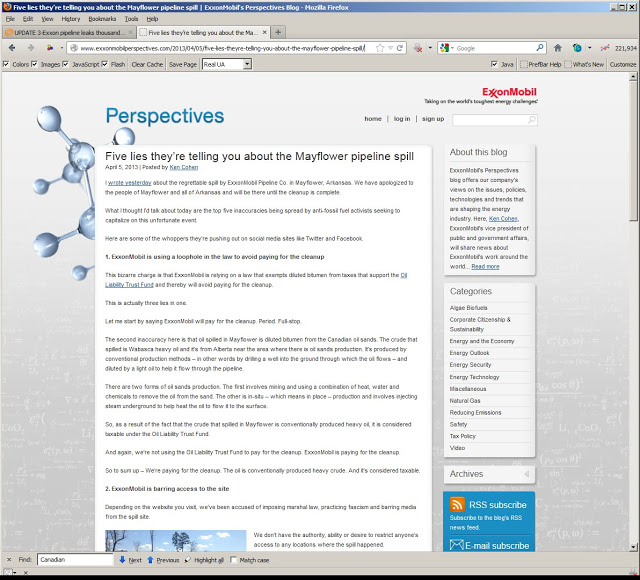
ExxonMobil says the radical Anti-Fossil Fuel Activists are spreading LIES!
Detail:

But even the Exxon Mobil PR person seems confused.
It’s a LIE that it’s Diluted Bitumen from Alberta Tar Sands!!!
OK, it’s from NEAR the Tar Sands region.
And it is Diluted. Well, OK it is from Tar Sands. But it is CONVENTIONAL HEAVY CRUDE!!

Crudemonitor.CA says nope: Wabasca Heavy is Dilbit. Maybe they’re radical tree-huggers.
Industry consultant: Wabasca Heavy = Diluted Bitumen
Declaration of Ronajit Sahu on MN PUC Enbridge application Alberta Clipper
Maybe an Anti-fossil fuel radical?
Another:
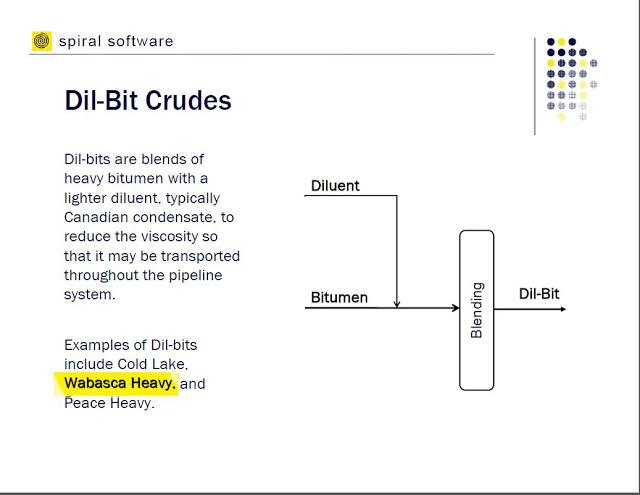
Industry presentation: It’s Dilbit.
From “Understanding the Quality of Canadian Bitumen and Synthetic Crudes“,
by Pat Swafford, Spiral Software Limited
Crude Oil Quality Group Meeting, February 26, 2009

Known Liberal News Source Reuters (sarcasm)
Wabasca Heavy Crude = Dilbit
“UPDATE 3-Exxon pipeline leaks thousands of barrels of Canadian oil in Arkansas”
Maybe ExxonMobil is confused about who is lying….

Hey at least there will be JOBS!!!
See also this article from Scientific American which discusses some other issues, including the corrosivity issue discussed on the ExxonMobil blog.
2: Arkansas Watershed Information

Arkansas Rivers — Flow Direction
Pink X (center) is site of spill

Arkansas Watersheds, highlight: metro Little Rock.
Pegasus Pipeline leak occured at Lake Conway
(pink X just north-west of Little Rock)

Pegasus Pipeline, Arkansas River Watershed

Drinking Water for ~900,000 people at Risk of Contamination
See also: “Arkansas Water System to Ask Exxon to Move Its Pipeline”
3: ExxonMobil and Georgia Pacific:
an investment match made in H—- ???

Check if your Mutual Fund includes BOTH Exxon-Mobile and Georgia-Pacific
— makers of Brawny Towels!
made from GENUINE FRESH PULPED FORESTS and cured with CLEAN BURNING NATURAL GAS (from Dimock PA).
G-P makes a good hedge on your ExxonMobil stock.
Part of Koch Industries, Inc., makers of the Tea Party Patriots and ALEC

Here it is– the ONLY accurate map of the Pegasus Pipeline
through Arkansas on the Internet.
Painstakingly assembled from the NPMS Public Viewer.
Please resuse any of my content under CC-BY-NC (with attribution).
Commercial License is Available: Please contact me
Posted by Bill Huston at 6:07 PM
republished with permission



